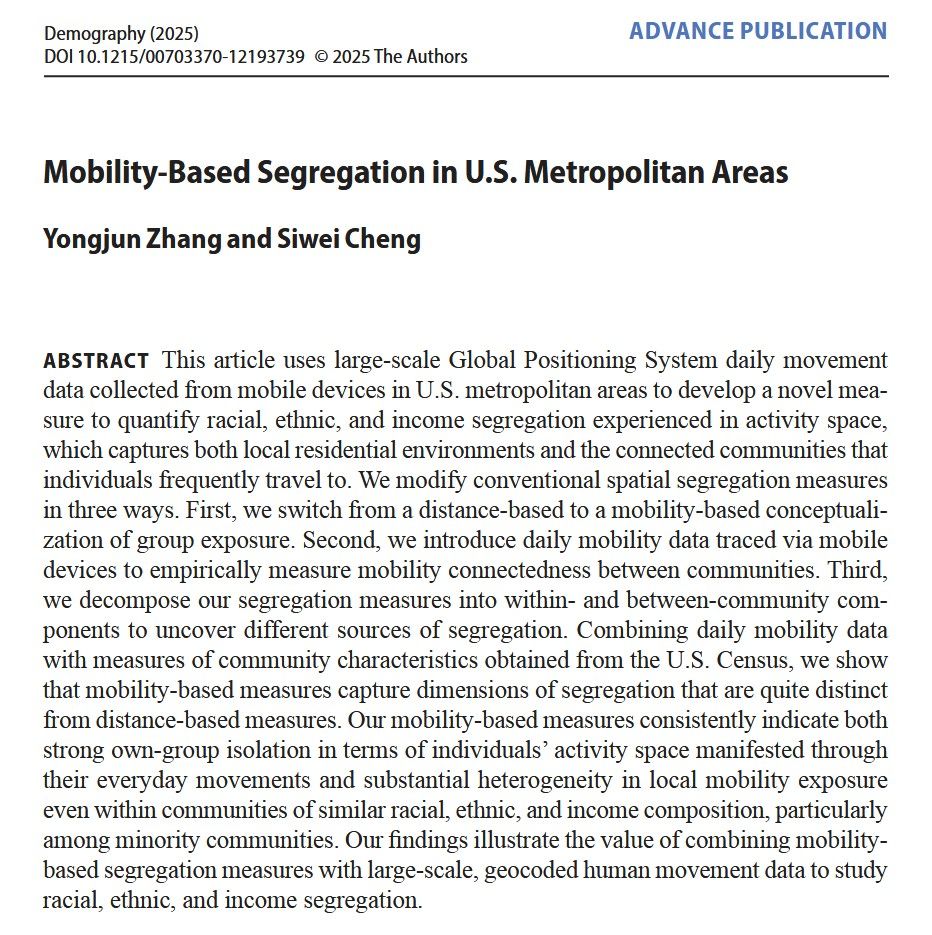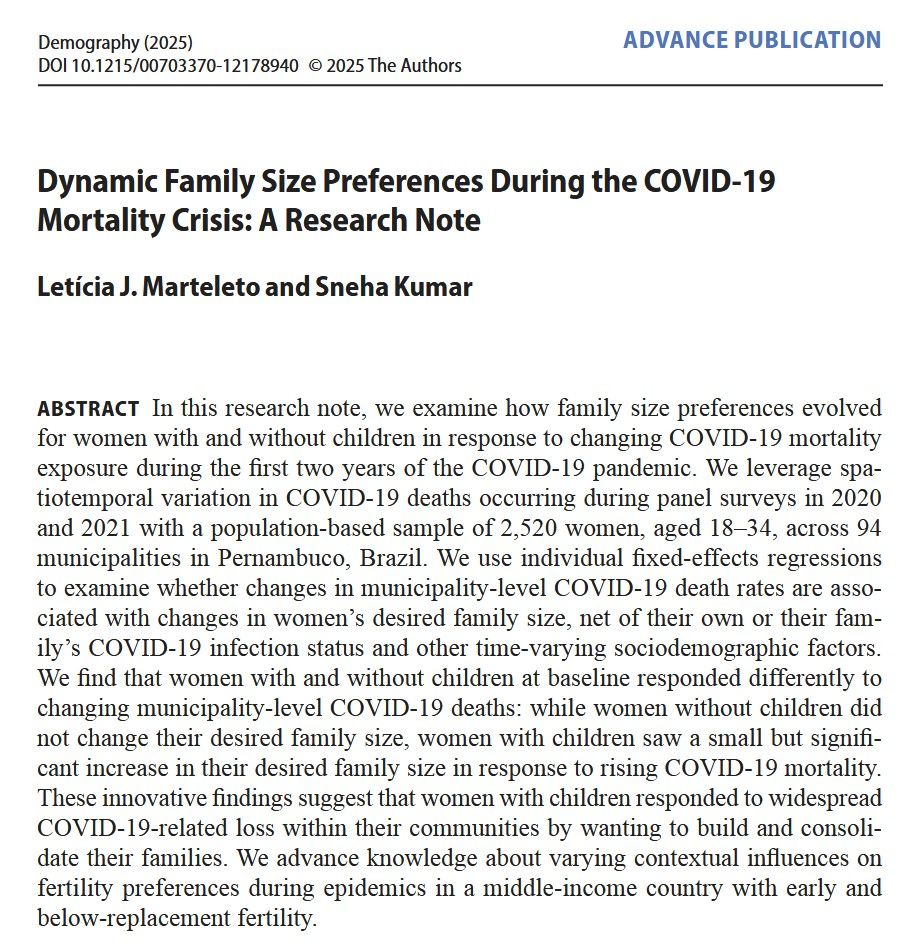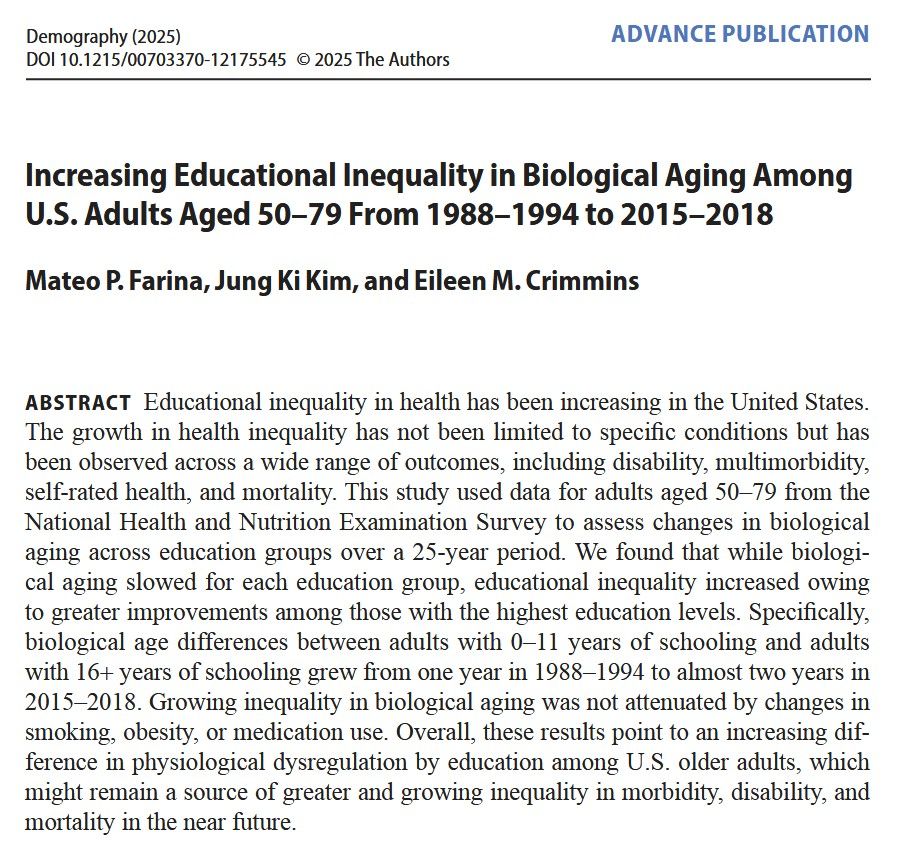Demography - the flagship journal of PAA
@readdemography.bsky.social
4.5K followers
750 following
170 posts
Demography publishes research drawing on several disciplines including the social sciences, geography, history, biology, statistics, epidemiology, and public health. Published bimonthly by Duke University Press. Subscribe to Open.
Posts
Media
Videos
Starter Packs
Reposted by Demography - the flagship journal of PAA
Claus Pörtner
@clausportner.bsky.social
· Aug 19
Reposted by Demography - the flagship journal of PAA































